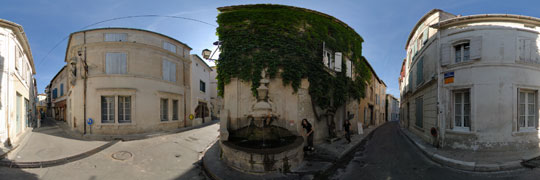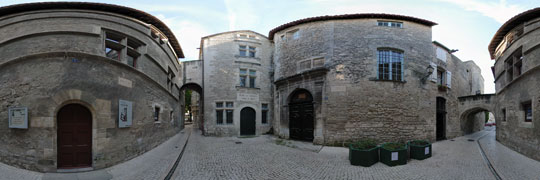Nice Panorama
- News :
- French Riviera :
- Provence :
- Var :
- Leisure :
- Economy :
- Gastronomy :
- Sport :
- Accommodation :
- Tourism :
- Site Map :
Saint-Rémy-de-Provence : virtual tour of the city
The first traces of habitation date back to 2500 years before our era. But it is only around 600 BC. JC that Gallic tribes first settled in end of a valley of the north face of the Alpilles, near an important spring that was popular since prehistoric times.
For a long time, the only visible remains of antiquity in Saint Rémy were the Triumphal Arch and the Mausoleum of the Julii. They are more commonly called “The Antiques”. These monuments marked the entrance of the city of Glanum.
The Mausoleum of the Julii
This funerary monument, dating from 30-20 BC. JC, was raised by the Julii, an influent family member of the indigenous elite. Particularly well preserved, it owes its fame to its particular structure which is unique in Roman architecture known today: a rectangular base with four faces beautifully sculpted, surmounted by a triumphal arch with double entry, on which is erected a small round temple with columns and pyramidal roof sheltering statues of two men to whom this exceptional monument is dedicated.
The Triumphal Arch
Dating from 20 AD. JC, Triumphal Arch (Arc de Triomphe) lost early the pediment surmounting the vault. The current slate roof dates from the eighteenth century. It is decorated with beautiful reliefs depicting the conquest of Gaul by Caesar. Fruits and leaves, symbols of abundance, suggest the benefits of the Pax Romana.
The ancient city of Glanum
At the Greek period, Glanum has a dual religious and commercial vocation which will be confirmed by the Roman conquest.
The upper and narrowest part is devoted to the Sanctuary around the Sacred Spring with its small temples including those dedicated to the goddess of health Valetudo and to Hercules.
In the middle zone, the monumental center is composed with a Basilica, the Forum, the Curia and some temples.
One then arrives in the residential area including thermal baths, rich villas including Antes House and the House of Cybele and Attis and some shops. Only a small part of the city has been discovered. The site is managed by the National Monuments, is still the subject of excavations conducted by the Research Institute of Ancient Architecture.

 Quicktime VR :
Quicktime VR :
 Java viewer :
Java viewer :
